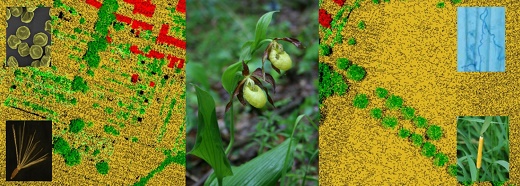
Department of
Systematic and
Environmental
Botany
Systematic and
Environmental
Botany
Main fields of study
Variability and taxonomy of vascular plants
- Apiaceae, Brassicaceae, Ericaceae, Malvaceae, Hypoxidaceae, Dracaenaceae, Cyperaceae
Regional and dynamic phytogeography
- Distribution of vascular plants in Poland and in the Wielkopolska Province
- Structure and dynamics of local and regional floras
- Refuges of floristic diversity
- Modeling of plant ranges
Chorological-ecological mechanisms of anthropogenic transformations of flora and vegetation
- Flora of railway, urban, agricultural areas and flora of medieval earthworks
Ecology and population biology of chosen plant species
- Regionally and nationally rare and threatened species
- Expansive native and alien species
Conservation and management of naturalistic resources 'in situ'
- Protection plans of Polish National Parks, Landscape Parks, nature reserves and the European NATURA 2000 sites
- Environmental Impact Assessment (EIA) of various programs, investments and long-term management projects
- The Integrated Monitoring of Natural Environment in Poland (IMEP)
Allergens of pollen grains – an analysis of the expression and localization in environmental and taxonomic terms
Methods and research techniques
Methods used in plant taxonomy:
- Structural analysis (morphology and anatomy) and molecular analysis
- Biometry and biostatistics
Methods used in floristic and chorological investigations:
- Mapping of flora using the 'point' and raster techniques
- GIS mapping and positioning with the GPS
- Multi-aspect geographic and ecological analysis of vascular flora
Vegetation analysis:
- The Braun-Blanquet's method of vegetation documentation
- Vegetation inventory using syntaxonomical classification of plant communities
- Beta-diversity of natural and man-made habitats and vegetation types
Methods used in plant population biology and ecology:
- In-field large-scale mapping (structure, demography and dynamics of populations)
- Experiments ex situ on life history and biology of plant populations
Methods used in assessment of values in natural environments:
- Applying of geobotanical and other bioindication methods to identification and interpretation of the structure and characteristics of natural environments
- Methods and techniques of evaluation of a general relation between man and environment for identification of environmental values and their threats
- Long-term comparative monitoring of changes in natural environments
Scientific projects carried out in the DSEB
- The employees of DSEB are involved in projects financed by the National Science Center, Polish Ministry of Science and Academic Education.
Scientific conferences and seminars organised by the DSEB
- 2014 - "Synanthropization of flora and vegetation". XI International Conference. Poznań-Obrzycko, 11-13 wrzesień 2014 r.
- 2006 - "The influence of transport infrastructure on nature", Poznań, 13-15th Sept. 2006.
- 2005 - "Taxonomy, chorology and ecology of plants in the times of threatened biodiversity", Poznań, 15-16th Sept. 2005.
- 2005 - "Regionalisation of the segetal weeds in Poland: segetal flora and vegetation in the protected areas", Poznań-Czerniejewo, 27-29th June 2005.
- 2003 - "The nature and its conservancy in the Poznań city: history, current state and perspectives" Poznań, 12-13th May 2003.
- 1999 - "Mechanisms of anthropogenic transformations of the plant cover", Poznań, 3-4th Dec. 1999.








© 2007-2022 Department of Systematic and Environmental Botany